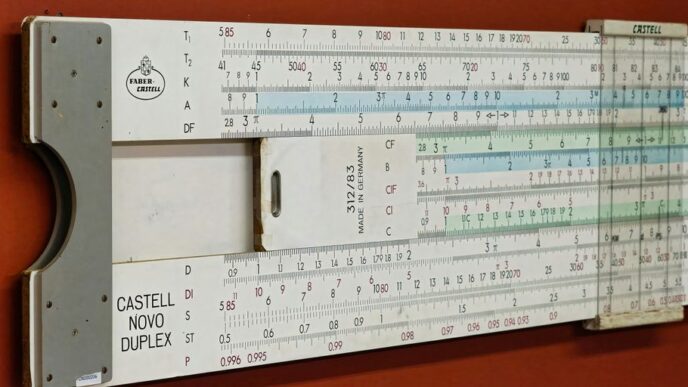
Under a California program aimed at curbing climate pollution, landowners across the US have received hundreds of millions of dollars for promised carbon dioxide reductions that may not occur.
The state has issued carbon offset credits to projects that may overstate their emissions reductions by 80 million tons of carbon dioxide, a third of the total cuts that the state’s cap-and-trade program was expected to achieve in the next decade, according to a policy brief that will be released in the next few days by the University of California, Berkeley.
The findings raise troubling questions about the effectiveness of California’s cap-and-trade program, one of the world’s most high-profile tests of such a market-based mechanism for combating climate risks. Implemented in 2013, the system is a centerpiece of the state’s ambitious efforts to rollback greenhouse-gas emissions, expected to achieve nearly 40% of California’s total cuts.
“If [the] findings are correct, then it would appear that a substantial component of the cap-and-trade program is not producing real emission reductions,” said Danny Cullenward, a research associate at the Carnegie Institution and member of a California Environmental Protection Agency committee that analyzes the impacts of the cap-and-trade system, in an e-mail.
California’s offsets program allows timber companies, Native American tribes, and other private landowners to sell credits to climate polluters in exchange for growing trees or taking other steps that reduce or absorb greenhouse-gas emissions. To date, such forestry projects have received more than 122 million credits, worth more than $1 billion.
But more than 80% of the credits that California’s Air Resources Board (ARB) has issued to some three dozen analyzed forestry projects likely don’t represent “true emissions reductions,” according to the new analysis by Barbara Haya, a research fellow with the Center for Environmental Public Policy, who has been studying and raising concerns about the state’s offset system for years.
Under a cap-and-trade program, the government sets a limit on the total quantity of greenhouse gases that industries covered by the policy can emit, a cap that tightens over time. Companies can buy or sell allowances that enable them to emit set levels of greenhouse gases, effectively creating a market and price for the pollution.
But carbon emitters often have a second option as well: purchasing credits from carbon offset projects that claim, through one of several ways, to reduce greenhouse gas emissions. Different cap-and-trade programs have different standards for what types of projects qualify, and for how their impacts are measured and verified.
ARB’s US Forest Projects protocol, the subject of the UC Berkeley analysis, accounts for more than 80% of the issued credits to date. It enables forest landowners to sell credits if they halt plans to cut trees, agree to plant more, or manage forest lands in a way that increases the amount of carbon they store. Crucially, they can also secure credits for “business-as-usual land management” if their forest already holds more carbon than normal for a particular type and region, provided they commit to maintaining those levels for the next hundred years.
The main argument for offsets is that they allow the market to find cheap ways to reduce emissions, and push sectors beyond those covered in the cap-and-trade program to improve their carbon footprints as well.
But there are major challenges with properly accounting for offsets.
For starters, if a timber company reduces harvesting on one piece of land, but that firm or another one meets market demand by simply increasing logging on some other parcel, then the program hasn’t truly achieved a net emissions benefit. This is known as “leakage.”
California’s protocol assumes a 20% leakage rate, but Haya’s analysis notes that several earlier studies found such rates can reach around 80%. A related but bigger problem is that landowners earn offset credits “that allow emitters in California to emit more than the state’s emissions cap today, in exchange for promises to sequester carbon over 100 years.”
That presents an obvious problem, since the bulk of the world’s emissions cuts need to happen in the next three decades to avoid the gravest threats of climate change.
But Haya argues further that many of the promised cuts may not actually happen at all. For one thing, it will become increasingly difficult for forests to retain carbon over time as trees age, climate effects take hold, and wildfires occur. For another, Haya points to a number of complexities within the protocol that suggest it doesn’t properly account for the increased levels of logging likely to occur as a result of the program in the decades to come.
A separate problem with offsets is known as “additionality.” If the landowner had no intention of actually harvesting that plot of land, then that owner is just asking to get paid to maintain the status quo—in which case there’s no real-life impact on emissions.
For the offsets system to work, the action, or lack of action, had to occur because of the program. But accurately assessing this is famously difficult, since you can’t know a person’s or company’s intentions with certainty.
“From a technical and administrative perspective, creating an effective offsets system is extremely difficult because the baseline is so hard to measure reliably,” said David Victor, an energy policy researcher at the University of California, San Diego, who has closely studied earlier systems, in an e-mail.
“Moreover, the politics of offsets [are] somewhat one-sided,” he added. “There are huge pressures to generate excess credits—pressures that arise from people who want to show that markets are liquid, from project developers who want to maximize credits, and from compliance buyers.”
In 2017, Stanford researchers published a paper concluding that California’s offsets program was helping to cut emissions on the whole, in what was seen as an important stamp of approval. The central finding was that around 64% of the projects claiming credits for “improved forest management” were “actively logging at or prior to project inception.”
But others found it conspicuous that about a quarter of the projects were owned by conservation nonprofits, which raises questions about the level of additional emissions probably achieved—since, as the study itself notes, such groups “are likely to be uninterested in logging their forest for profit, and their management practices may already sequester forest carbon.”
Haya stresses that she’s not arguing landowners are breaking any laws. Rather, she says, the state has set up “rules that invite false crediting,” and “the forest landowners are just playing along.”
ARB, for its part, defends the forestry protocol, stating that the way it accounts for leakage and additionality was based on the best available science.
Rajinder Sahota, the board’s assistant division chief, says that the program is designed to create economic incentives for landowners to keep trees intact. She adds that ARB is scheduled to review the forestry protocol later this year through a public process that will examine new studies, and seek input from academic experts, the US Forestry Service, and others.











